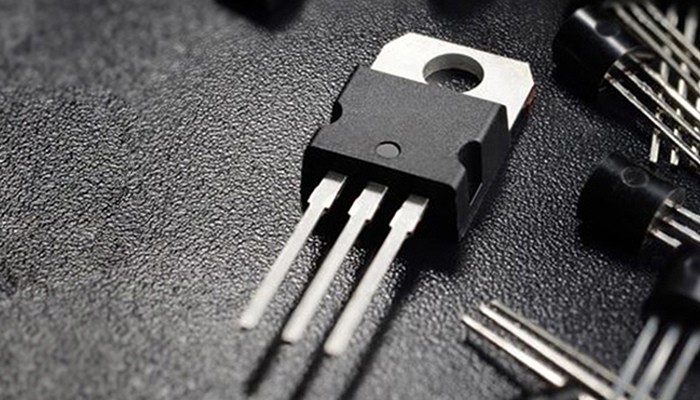The Insulated-Gate Bipolar Transistor (IGBT)
In the realm of power electronics, few components have had as transformative an impact as the Insulated-Gate Bipolar Transistor (IGBT). This hybrid semiconductor device, ingeniously combining the best attributes of MOSFETs (Metal-Oxide-Semiconductor Field-Effect Transistors) and BJTs (Bipolar Junction Transistors), has become the cornerstone of efficient high-power switching across countless industrial, automotive, and consumer applications.

What is an IGBT?
At its core, an IGBT is a three-terminal power semiconductor device:
* Collector (C)
* Emitter (E)
* Gate (G)
It functions as an electronic switch. Applying a sufficient positive voltage to the Gate (relative to the Emitter) turns the device ON, allowing current to flow between the Collector and Emitter. Removing this gate voltage (or applying a zero/negative voltage) turns it OFF, blocking high voltages.
The Hybrid Advantage: Why IGBTs Dominate
The IGBT’s superiority stems from its unique structure:
- MOSFET Input Characteristics: Like a MOSFET, the IGBT is controlled by voltage applied to its insulated gate. This requires very little gate current, simplifying drive circuitry and reducing control power losses.
- BJT Output Characteristics: Like a BJT, the IGBT utilizes conductivity modulation in its thick, low-doped drift region when turned ON. This allows it to handle very high currents (hundreds or thousands of Amperes) and block very high voltages (hundreds to thousands of Volts) with a relatively low forward voltage drop .
Key Advantages
* High Voltage & Current Handling: Significantly outperforms MOSFETs in high-voltage (>600V), high-current applications.
* Low Conduction Losses: Lower V<sub>CE(sat)</sub> than comparable high-voltage MOSFETs, especially at high currents, leading to less heat generation.
* Fast Switching Speeds: Faster than traditional BJTs or Thyristors, enabling efficient high-frequency operation (kHz range).
* Voltage-Controlled Gate: Simple, low-power drive requirements.
* Robustness: Good short-circuit withstand capability (in specific designs).
Where IGBTs Make the Difference: Key Applications
IGBTs are indispensable in systems requiring efficient control of substantial electrical power:
- Motor Drives & Industrial Automation: Variable Frequency Drives (VFDs) controlling AC motors in factories, pumps, fans, and conveyor systems rely heavily on IGBT inverters for precise speed and torque control, drastically improving energy efficiency.
- Electric & Hybrid Vehicles (EVs/HEVs): IGBT modules form the heart of the traction inverter, converting DC battery power to variable AC for the electric motors. They also power onboard chargers and DC-DC converters. Tesla’s early dominance was partly built on innovative IGBT utilization.
- Renewable Energy: Solar inverters convert DC from photovoltaic panels into grid-compatible AC. Wind turbine converters similarly use IGBTs for power conditioning and grid connection, maximizing energy harvest.
- Uninterruptible Power Supplies (UPS) & Power Supplies: IGBTs provide efficient, fast switching in high-power UPS systems and switched-mode power supplies (SMPS) for servers, data centers, and industrial equipment.
- Induction Heating & Welding: Enabling precise and powerful control for industrial heating and welding processes.
- Traction Systems: Beyond EVs, powering electric trains, trams, and subway systems.
- Medical Imaging: Used in high-voltage power supplies for X-ray and MRI machines.
Evolution & Technological Frontiers
IGBT technology continues to advance, driven by demands for higher efficiency, power density, and reliability:
* Trench-Gate vs. Planar: Trench-gate designs reduce on-state voltage drop and improve switching speed.
* Field-Stop (FS) / Soft Punch-Through (SPT):Thinner wafers with optimized doping profiles reduce conduction and switching losses.
* RC (Reverse Conducting) IGBT: Integrates a freewheeling diode monolithically, reducing module size and parasitic inductance.
* Wide Bandgap (WBG) Integration: While Silicon Carbide (SiC) MOSFETs and Gallium Nitride (GaN) HEMTs challenge IGBTs in ultra-high-frequency/high-efficiency niches, IGBTs often remain more cost-effective for mainstream high-power applications (e.g., 600V-1700V). Hybrid modules combining IGBTs with SiC diodes are increasingly common.
* Packaging Innovations: Advanced packaging (e.g., sintered die attach, copper wire bonding, silver sintering) improves thermal performance, power cycling capability, and reliability.
Challenges and Considerations
Despite their strengths, IGBTs present design challenges:
* Switching Losses: While better than BJTs, switching losses (especially turn-off losses) become significant at very high frequencies. Careful thermal management is critical.
* Tail Current: During turn-off, a characteristic “tail current” flows, contributing to turn-off losses. Modern designs minimize this.
* Gate Drive Requirements: Precise gate drive voltage and protection against voltage spikes (dV/dt) are crucial for reliable operation. Shoot-through prevention in bridge configurations is vital.
* Cost vs. Performance Trade-offs: Balancing VCE(sat), switching speed, and ruggedness often involves trade-offs addressed through specific chip design and packaging.

Conclusion: The Enduring Powerhouse
The IGBT remains the undisputed workhorse for high-power electronic switching applications. Its unique blend of high-voltage blocking capability, high-current handling, relatively low conduction losses, and voltage-controlled switching has enabled massive leaps in energy efficiency, controllability, and miniaturization across critical industries. As research continues to refine IGBT technology and packaging, and as it finds synergies with emerging wide-bandgap semiconductors, the IGBT is poised to remain a fundamental enabler of the electrified, efficient, and sustainable future for years to come.
If you want to explore more component,
please visit our website:https://www.topdiodes.com
Or send inquiry to : Luna@topdiode.com



